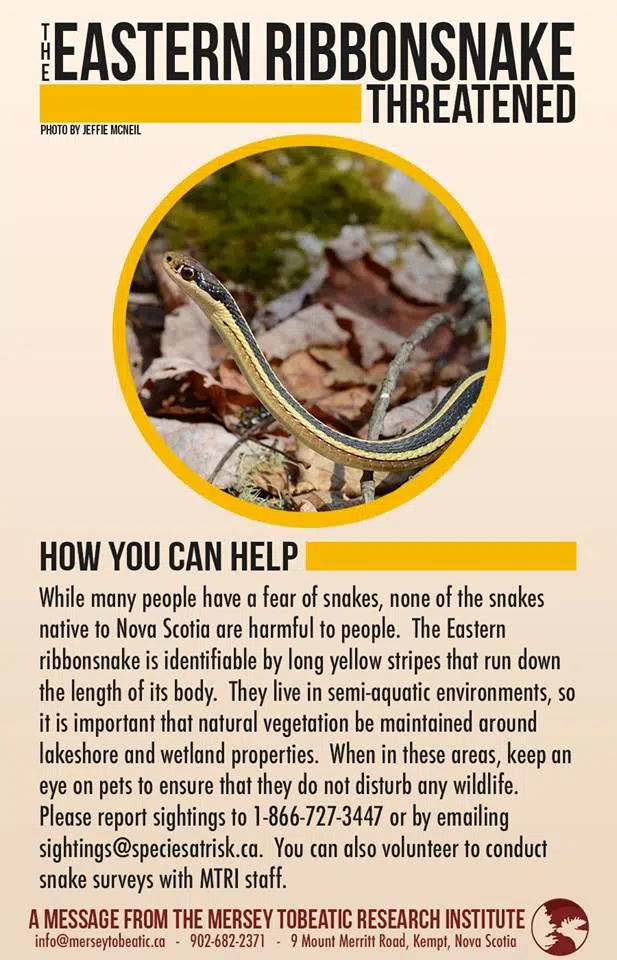As spring begins to finally take hold, some sleeping creatures are slithering their way out of hibernation.
The elusive Eastern Ribbon Snake is a threatened species in Southwest Nova Scotia, though it’s been hard to study it and its habitats.
That’s why groups like the Mersey Tobeatic Research Institute (MTRI) and biologists like Steve Mockford collect data on the snakes.
Mockford says they’re threatened by development as well as invasive species.
“The spread of chain pickerel and small mouth bass who will both eat adults and young snakes quite readily.”
The snakes generally live near water and have been found along the South Shore, particularly in Petite Riviere and there’s a dense population in Kejimkujik National Park.
As development, including buildings and roads, can pose a threat to the snakes, Mockford says he often engages with property owners and developers about the species that can be found in the area.
“(Property owners) who may not know what the effects of development are on lakes or how they can mitigate or change their development patterns to facilitate these species.”
The more they know about the species, the better it can be protected.
Finding the snakes can be quite difficult though.
Mockford says they’ll test water in key areas to see if they can find ribbon snake DNA.
But they’ve received help in the past from an unlikely source.
Simon Gadbois is the director of the Canid and Reptile Behaviour and Olfaction Lab at Dalhousie University.
Gadbois has trained dogs to find all kinds of species at risk, including the Eastern Ribbon Snake.
That’s led to a lot of data being collected, including in Kejimkujik.
“Most of the biologists I worked with at the time were telling me ‘yeah, this isn’t going to work’ well it’s still, to this day, one of our best projects in a sense of the highest success rate.”
Gadbois’ dogs have even been able to ignore the scent of other related snakes while doing their search.
“We have to train them to focus only on the Ribbon Snake and ignore all of the others because otherwise we have false alarm rates that are way too high and you waste your time and you waste the time of the dog.”
That led to a playful incident where his own dog watched him pick up a green snake to show some students, which made the canine think he wanted those snakes instead.
The rest of the day he got false alarms so they had to bring the dog back to the lab to retrain for the scent of the Ribbon Snake.
All of the dogs are volunteer, though Gadbois owns a Golden Retriever himself, who takes part.
When they find an animal they’ve been trained to track, they alert him or the other trainers.
They encourage the dogs to do whatever comes naturally such as point, sniff, wag their tails.
Recently they’ve been working to sniff out wood turtles.
They’ll continue that project this year.
If you spot a Ribbon Snake or any species at risk in the area, you can reach out to MTRI directly by calling 1-866-727-3447 or head to the Species At Risk website to learn more or report sightings.









